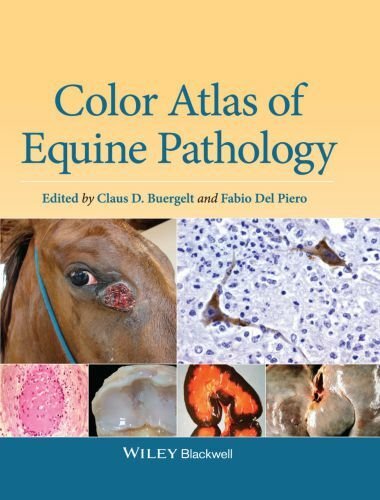The atlas is intended as a reference for readers interested in the pathology of equine diseases. It features macroscopic digital images of equine diseases supplemented by microscopic transparencies and a text highlighting the main aspects of equine diseases and disorders.
Color Atlas of Equine Pathology

The atlas is structured according to different body systems and emphasizes pathologic aspects of diseases in the neonate, juvenile, and adult horse. While attempting to incorporate as many diseases for which information and illustrations were available, the editors are aware that some may have been omitted by chance. Not all images are of best quality as these are from historic entities for which better examples were not available. For very unique equine diseases, contributions from col-leagues in the field were solicited. We gratefully acknowledge their willingness to share their material and knowledge.
As editors professionally engaged in a high number of equine necropsies and tissue biopsies, we acquired a substantial knowledge base and collected a plethora of pathologic illustrations during our careers. We would like to convey this richness of professional experience to the readership. We are thankful for having enjoyed the opportunity to first share the equine pathology with veterinary students, trainees in veterinary pathology, and clinicians at our institutions.
With this volume, we strive to make our material and expertise available to a wider veterinary and equine community, especially general practitioners, farm managers, and veterinary pathologists. Although we attempted to keep most illustrations at the macroscopic pathologic level, we saw the need for microscopic, immunohisto chemistry, and graphic support in disease entities where gross changes are usually absent or overlap and when morphologic aspects for differential diagnoses had to be clarified. We selected chapter contributors as experts in the field where we felt incomplete in our image collection and knowledge base.
We also solicited individual transparencies from individual sources and made every effort to obtain their permission as copyright owners. We are aware that some diseases are incompletely covered and that we did not expand the geographic scope of our work beyond North America. We refer to other resources describing global equine diseases in more details.
Color Atlas of Equine Pathology
Password: pdflibrary.net
